Humpback Whales Feed in Different Ways Finds NOAA
New NOAA-led research on tagged humpback whales in Stellwagen Bank National Marine Sanctuary reveals a variety of previously unknown feeding techniques along the seafloor. Rather than a single bottom feeding behavior, the whales show three distinct feeding approaches: simple side-rolls, side-roll inversions, and repetitive scooping.
A recently published paper, in the journal Marine Mammal Science, indicates that bottom side-roll techniques are common in Stellwagen Bank National Marine Sanctuary and the Great South Channel study area, a deep-water passage between Nantucket, Mass. and Georges Bank-further southeast.The study further states that the observed feeding behavior also leads to vulnerability to entanglement in bottom set fishing gear, an issue which is a major mortality factor for the species. This finding reaffirms a NOAA Fisheries regulation that mandates the use of sinking line between fishing traps used in the lobster fishery as a way of reducing entanglements.
The new findings follow earlier NOAA-led studies detailing so-called "bubble net" feeding behaviors near and at the surface. Bubble net feeding is a behavior in which humpback whales corral and contain fish into a small area by trapping them in nets of air bubbles so they can more efficiently scoop them up in their large filter-feeding mouths.The behaviors are used by individual animals and as part of coordinated feeding behaviors involving two or more animals.
"Tagging technology is allowing us to observe whales underwater, much as land-based biologists study animal subjects in their specific environments," said David Wiley, sanctuary research coordinator and aco-author on the paper. "The data have allowed us to detect new feeding techniques as well as nuances in those behaviors. We have determined that bottom feeding is a much more commonly used technique than the more well known bubble net behaviors."
Bottom side-rolling feeding was previously hypothesized from observations of scars on the jaws of humpback whales and from earlier tagging projects. In the recent studies, researchers showed that this behavior happens for extensive periods of time at or near the seafloor, that it occurs in the presence of concentrations of sand lance (a preferred prey fish), and that the behavior is accompanied by the expansion of the animal's ventral (throat) pleats.
Information was collected through the use of DTAGs (synchronous motion and acoustic recording tags) and Crittercam, National Geographic Society's underwater video and audio recording system.
"By visualizing the data with TrackPlot, we can actually see how the whale moves underwater and this enables us to discover different kinds of foraging behaviors," said lead author Colin Ware of the University of New Hampshire's Center for Coastal and Ocean Mapping. TrackPlot is a custom software tool for DTAG data that produces a ribbon-like image in three dimensions. "With these 3-D visualizations, we can follow the path of the whale from surface to seafloor along with all of the pitch, roll and heading changes while underway. By adding Crittercam video, we now get a more complete understanding of these various bottom feeding techniques," Ware said.
Designated in 1992, Stellwagen Bank National Marine Sanctuary encompasses 842 square miles of ocean, stretching between Cape Ann and Cape Cod offshore of Massachusetts. Renowned for its scenic beauty and remarkable productivity, the sanctuary supports a rich diversity of marine life including endangered great whales, seabirds, more than 60 species of fishes and hundreds of marine invertebrates.

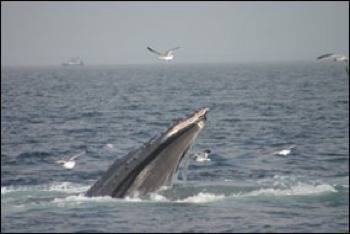

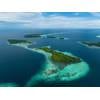

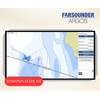
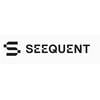
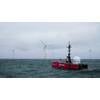







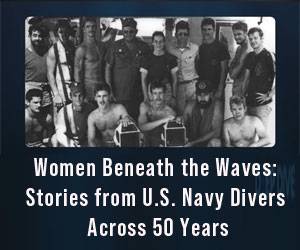

 August 2025
August 2025



